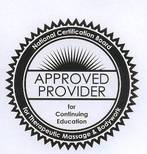ESSENTIAL OILS WORKSHOP

$150.00 for the 6 hour course.
November 11, 2012 The Heights, Houston
ESSENTIAL OILS OUTLINE for Workshop
Introduction on why we need to know about what we are putting on our clients!
History of Essential Oils
A. Protection against plagues (Dark Ages)- Black Plague of the 17th century.
B. Secret of clove.
C. Mankind’s first medicine. Fresh herbs are pulled from earth’s energy, and oils are the substance of the plant.
D. WWII- People who were given essential oils were saved, but when antibiotics were discovered and drugs came into being, oils were no longer used. In the Journal of the AMA it was stated in the July 3 heading that the 4th leading cause of death now is doctor’s errors, unnecessary surgeries, and hospital deaths.
E. Different oils have different effects because of the constituents. Some have sesquiterpines, for example,
which attract oxygen molecules. An example of this is frankincense, derived from a tree.
Importance of purity
A. What are the standards of the land where the oils are sourced?
B. What is the quality of the process of the oils?
C. How is the finished product assessed? Do they use state of the arts analysis for the oils or gas chromatography?
D. If problems are noted, is outside testing employed?
Synthetic and adulterated oils
A. Mislabeled
B. Diluted
C. Adulterated- may affect the quality of the oil and may impact the benefits to its owner. IE, lavender vs. lavendin. The true lavender is lavendula agustofolia oficionalis. Lavindin is cheaper to produce. It contains camphor as one of its constituents, which burns. So, if one buys this instead of lavender thinking it will help a burn, it may make the burn worse.
D. Cassia is cheaper and is added to cinnamon bark, then sold as cinnamon.
Schools of thought
A. England has influenced the US greatly. They dilute and use oil in massage only.
B. French use oils neat and use them for medicinal purposes.
C. Germans use inhalation for psychotherapy.
D. All are best to do.
Diffusing
Cleanse the air with mist. Set the mood.
Purity Ways to use oils (see sheet)
Miracles, dba Margo Benge is approved by the National Certification Board for Therapeutic Massage and Bodywork (NCBTMB) as a continuing education Approved Provider.
Click here to register for this course.
Each 6 hour course includes lunch.
For information about the instructors click here: Gail Toland and Margo Benge .
To review the Refund Policy click here.
November 11, 2012 The Heights, Houston
ESSENTIAL OILS OUTLINE for Workshop
Introduction on why we need to know about what we are putting on our clients!
History of Essential Oils
A. Protection against plagues (Dark Ages)- Black Plague of the 17th century.
B. Secret of clove.
C. Mankind’s first medicine. Fresh herbs are pulled from earth’s energy, and oils are the substance of the plant.
D. WWII- People who were given essential oils were saved, but when antibiotics were discovered and drugs came into being, oils were no longer used. In the Journal of the AMA it was stated in the July 3 heading that the 4th leading cause of death now is doctor’s errors, unnecessary surgeries, and hospital deaths.
E. Different oils have different effects because of the constituents. Some have sesquiterpines, for example,
which attract oxygen molecules. An example of this is frankincense, derived from a tree.
Importance of purity
A. What are the standards of the land where the oils are sourced?
B. What is the quality of the process of the oils?
C. How is the finished product assessed? Do they use state of the arts analysis for the oils or gas chromatography?
D. If problems are noted, is outside testing employed?
Synthetic and adulterated oils
A. Mislabeled
B. Diluted
C. Adulterated- may affect the quality of the oil and may impact the benefits to its owner. IE, lavender vs. lavendin. The true lavender is lavendula agustofolia oficionalis. Lavindin is cheaper to produce. It contains camphor as one of its constituents, which burns. So, if one buys this instead of lavender thinking it will help a burn, it may make the burn worse.
D. Cassia is cheaper and is added to cinnamon bark, then sold as cinnamon.
Schools of thought
A. England has influenced the US greatly. They dilute and use oil in massage only.
B. French use oils neat and use them for medicinal purposes.
C. Germans use inhalation for psychotherapy.
D. All are best to do.
Diffusing
Cleanse the air with mist. Set the mood.
Purity Ways to use oils (see sheet)
Miracles, dba Margo Benge is approved by the National Certification Board for Therapeutic Massage and Bodywork (NCBTMB) as a continuing education Approved Provider.
Click here to register for this course.
Each 6 hour course includes lunch.
For information about the instructors click here: Gail Toland and Margo Benge .
To review the Refund Policy click here.
